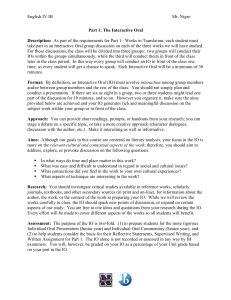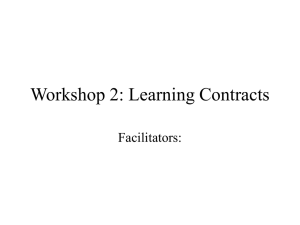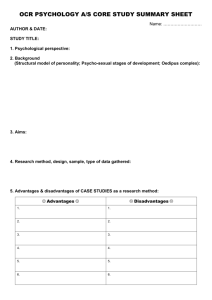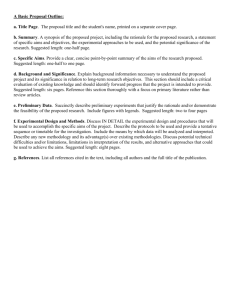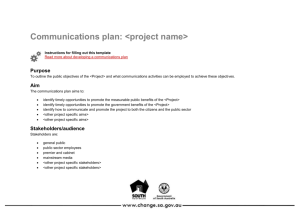Produce a title page for your assignment which includes the
advertisement
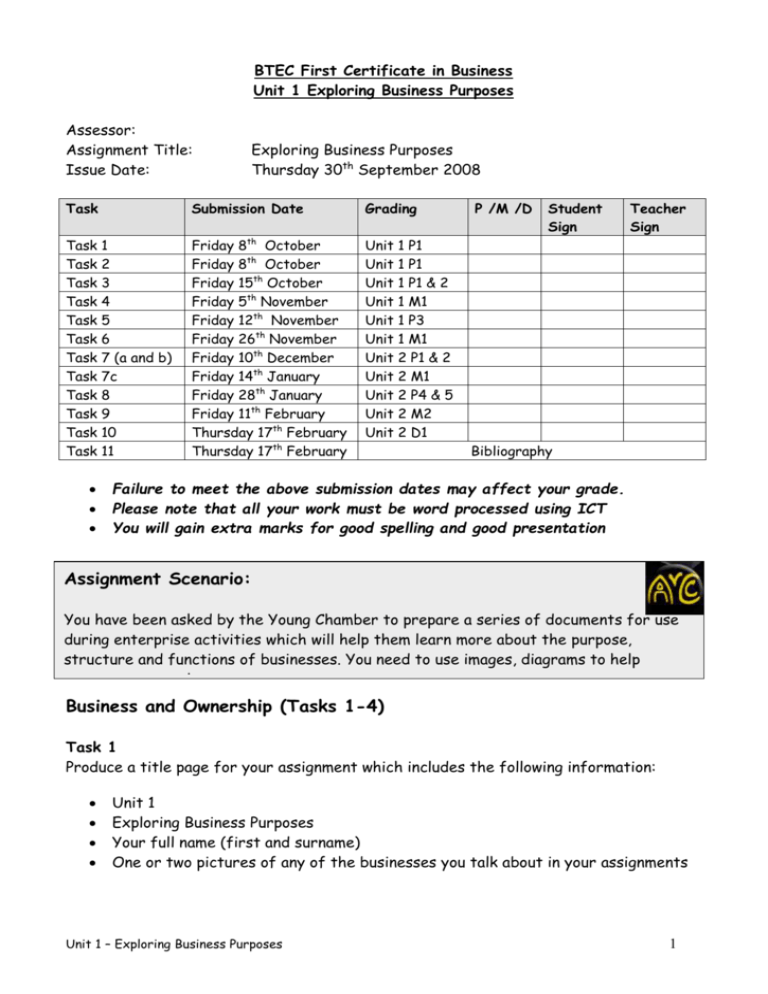
BTEC First Certificate in Business Unit 1 Exploring Business Purposes Assessor: Assignment Title: Issue Date: Exploring Business Purposes Thursday 30th September 2008 Task Submission Date Grading Task 1 Task 2 Task 3 Task 4 Task 5 Task 6 Task 7 (a and b) Task 7c Task 8 Task 9 Task 10 Task 11 Friday 8th October Friday 8th October Friday 15th October Friday 5th November Friday 12th November Friday 26th November Friday 10th December Friday 14th January Friday 28th January Friday 11th February Thursday 17th February Thursday 17th February Unit 1 P1 Unit 1 P1 Unit 1 P1 & 2 Unit 1 M1 Unit 1 P3 Unit 1 M1 Unit 2 P1 & 2 Unit 2 M1 Unit 2 P4 & 5 Unit 2 M2 Unit 2 D1 P /M /D Student Sign Teacher Sign Bibliography Failure to meet the above submission dates may affect your grade. Please note that all your work must be word processed using ICT You will gain extra marks for good spelling and good presentation Assignment Scenario: You have been asked by the Young Chamber to prepare a series of documents for use during enterprise activities which will help them learn more about the purpose, structure and functions of businesses. You need to use images, diagrams to help present your work. Business and Ownership (Tasks 1-4) Task 1 Produce a title page for your assignment which includes the following information: Unit 1 Exploring Business Purposes Your full name (first and surname) One or two pictures of any of the businesses you talk about in your assignments Unit 1 – Exploring Business Purposes 1 Task 2 Write a paragraph for each, to explain the following different types of business ownership: 1. Sole trader 5. Franchises 2. Partnership 6. Charity 3. Private Limited Company (Ltd) 4. Public Limited Company (PLC) Task 3 (Unit 1 P1& P2) You now need to choose 4 different organisations and describe them in more detail. Choose FOUR from the following: 1. A local business - a sole trader or a partnership. It is likely to be a small business. You should find this yourself. It could be a business in your family or a business local to where you live or your college. 2. A Ltd e.g. Cameron Balloons or Numatics International 3. A PLC e.g. Sainsbury's / Tesco or Virgin Group 4. A charity e.g. Oxfam or The Eden Project 5. A franchise e.g. McDonalds or KFC Describe each, in detail, making sure you cover the following: Purpose What the business does and its main purpose Does it supply goods or services or both? Does it aim to make a profit or is its purpose to provide a public service? Does it provide goods/services at below cost so that ordinary people can afford them? Ownership Who owns the business (don't repeat task 1 here - just mention that you know what kind of ownership it has) Size The size of the business: Click here for links to help on find this information How many employees does the business have? How many branches or outlets does the business have? Is it classed as a small, medium or large business? (Click here for a definition) If possible, try to find out some information on the businesses finances e.g. profits or sales figures. Scale The scale of the business Is it a local, regional, national, European or global business? Unit 1 – Exploring Business Purposes 2 Task 4 (Unit 1 M1) Choose two of the businesses you have written about and fully explain what aspects of the ownership are similar and what aspects are different. You could then summarise this in a table. The two businesses you choose should be very different from each other, for example a national or multinational retail outlet compared to a local privately-owned outlet. This will help you get a better mark for your work as you will have more to write about. Differences & Similarities between Business 1 & Business 2 Similarities: Product/service provided Purpose Size Ownership Scale Location Differences: Product/service provided Purpose Size Ownership Scale Location Unit 1 – Exploring Business Purposes 3 Business Activities (Tasks 5 & 6) The Young Chamber have now asked you to write an article for a Business Education magazine which would help students understand how businesses are classified by the activities which they conduct as part of their day-to-day operations and also how the various sectors have grown and declined over time. Task 5 (Unit 1 P3) Start your article by in detail explaining what is meant by primary, secondary and tertiary sectors with at least two examples of businesses in these sectors. Then use the table below to describe each sector in more detail giving clear local, regional and national examples. Local Regional National Primary sector: Examples How does example qualify? Secondary sector: Examples How does example qualify? Tertiary sector: Examples How does example qualify? Chose one of your examples from each of the above 3 sectors and give more detail about the business. Task 6 (Unit 1 M2) In the rest of your article you must: Explain that the size of the different sectors changes through time as they may grow or decline. Include your graphs on employment trends in the 3 sectors. Explain the various areas of growth or decline in all three sections of business activity. Give reasons for these changes in the size of the sectors. Unit 1 – Exploring Business Purposes 4 Business Aims and Objectives (Task 7) To help the students understand why businesses exist and how the aims & objectives vary between sectors, in your role as Business Advisor to the Young Chamber, you are expected to prepare a PowerPoint presentation which will be used in school as part of the induction process into the Young Chamber. Task 7a (Unit 2 P1) Start by defining what “Aims” and “Objectives” are and clearly show the difference between the two. Task 7b (Unit 2 P2 & 3) Using Thorpe Park and one other business you researched in Task 2, produce a presentation which must include: A description of the difference between aims and objectives. An explanation of what SMART objectives are. Describe why businesses set aims & objectives and how they help businesses to achieve their purpose (e.g. survival, break-even, growth, service provision). You need to give some examples of businesses aims and objectives (e.g. Thorpe Park & a couple of other businesses.) An explanation of how aims and objectives differ between different sectors and types of businesses (e.g. public, private, not-for-profit). Again giving at least two examples from each different business to support your observations. Explain the aims and objectives for both businesses you are researching. Task 7c (Unit 2 M1) Using the same two businesses as above, compare and contrast their aims and objectives. Discuss the similarities and differences between the aims and objectives. Functional Areas of Business (Tasks 8 -10) Following requests from other Young Chamber schools, the Young Chamber Executive have asked you to write a report which explores the main functional areas of business organisations. This report will need to be detailed and illustrated by giving real life examples. Task 8 (Unit 2 P4 & P5) The purposes of functional areas 1. Describe the functional areas and their main purposes within business organisations. Unit 1 – Exploring Business Purposes 5 2. For Thorpe Park, describe the main activities and responsibilities of FOUR of the following functional areas: a. Administration b. Customer Service c. Production d. Human Resources e. Finance f. Sales g. Marketing h. Research and Development 3. Explain the role that each functional area plays in supporting the aims and objectives of the business. Task 9 (Unit 2 M2) The interaction of functional areas For Thorpe Park and one other business described: 1. Draw an organisational structure which shows the various functional areas used to support its day-to-day operations. 2. Explain how the various departments of each organisation interact and how they inter-relate to support each other. Task 10 (Unit 2 D1) For each of the two businesses explored in Task 9, you are required to evaluate the extent to which the functional areas contribute to the aims & objectives of the business. 1. Identify the aims and objectives for both businesses. 2. Using the table below show how each department contributes to particular aims and objectives of each business. Business Name: Department Business Name: Department How it contributes to the aims & objectives How it fails to contribute to the aims & objectives How it contributes to the aims & objectives How it fails to contribute to the aims & objectives Unit 1 – Exploring Business Purposes 6 3. Summarise your view as to which of the two businesses departments work most effectively together to meet the businesses aims and objectives. Task 11 On a new page: Put a title Bibliography List all the sources of information that you have used for each task (include any speakers, websites, books and class notes) Unit 1 – Exploring Business Purposes 7

